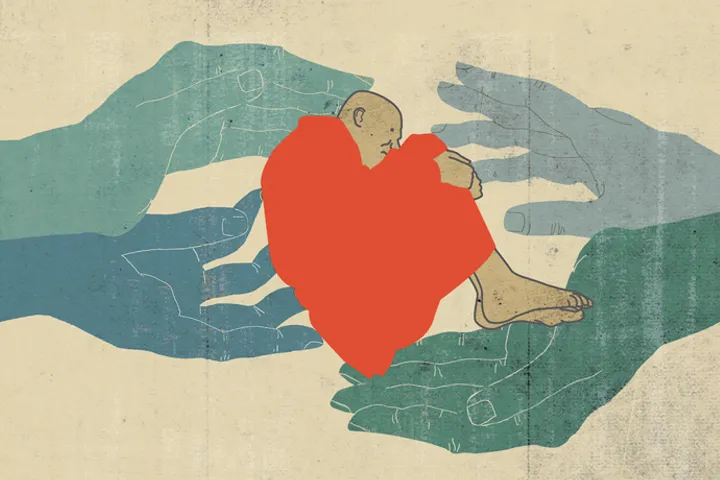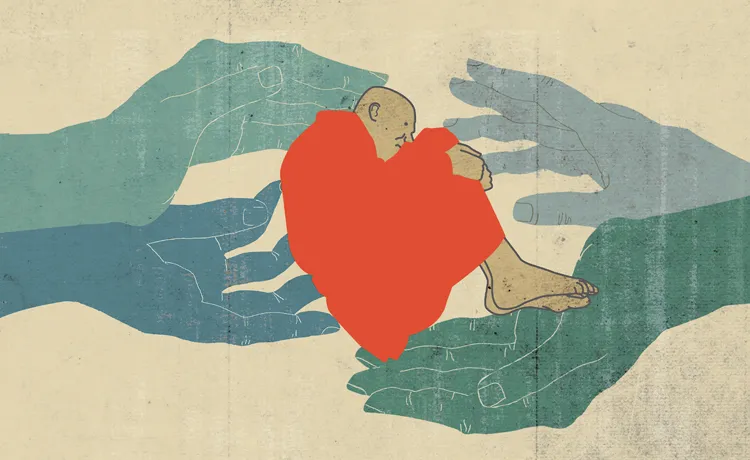Mark, the shortest of the gospels, is fascinating. It has a way of being both concise and vivid at the same time—jarring in its briskness, yanking the reader from one scene to the next. Every sentence feels deliberate. Which is why a passage in Mark’s depiction of Jesus’ betrayal at Gethsemane is so perplexing. He recalls most of the night with the same intensity and bedlam of the other gospels: Judas approaches Jesus with armed men (Mark 14:43), Judas kisses Jesus as a sign that He is the one to be arrested (Mark 14:44-45), and one of the Lord’s followers cuts off the ear of the high priest’s servant (Mark 14:47). But Mark alone chooses to include a peculiar detail: “A young man was following Him, wearing nothing but a linen sheet over his naked body; and they seized him. But he pulled free of the linen sheet and escaped naked” (Mark 14:51-52). Why does this author, who tends to strip stories down to their essentials, feel led to add this seemingly incidental moment to his account of that traumatic night?

There are no concrete answers. Because of the sparse details in Mark’s gospel, there are only speculations. Some say that the young man was meant to be the author placing himself within the action of the scene, to show that he was there and corroborate the events of the night in Gethsemane. The reasoning behind this theory is that it takes place only in Mark’s account, and while trivial, is specific enough to prove he was an eyewitness.
In Mark for Everyone, N. T. Wright takes us back to the beginning of the Old Testament. He writes, “Like Adam and Eve, the disciples are metaphorically, and in this case literally, hiding their naked shame in the garden. Their disgrace is complete.” By falling asleep, they have once again failed the One who, despite the pain and suffering to come, will not fail them. Ched Myers, author of Say to This Mountain, offers another suggestion: “This naked flight symbolizes the shame of the discipleship community, leaving behind a ‘linen cloth.’ The garment will reappear as the burial wrap of Jesus.” This specific cloth, or sindón, was typically used for burial, and every other time the object is mentioned in the New Testament, it is for that purpose. Could it symbolize the distress and troubles of the disciples, who, after putting so much faith in Jesus, were seemingly left with nothing?
Nero used the fire to justify the oppression of believers.
Mark probably knew hardships intimately. Systematic persecution of Christians in the Roman Empire was first documented under Nero in 64 A.D. In July of that year, the Great Fire of Rome took place, damaging 10 of the 14 districts in the city. Nero blamed the devastation on the Christian community and used this event to justify the oppression of believers.
Mark’s Gospel was written during the ensuing persecution. Throughout the book, noticeable attention is given to suffering—an emphasis not present in the other gospels. We find one especially harrowing description in chapter 13:
But be on your guard; for they will deliver you to the courts, and you will be flogged in the synagogues, and you will stand before governors and kings for My sake, as a testimony to them. The gospel must first be preached to all the nations. When they arrest you and hand you over, do not worry beforehand about what you are to say, but say whatever is given you in that hour; for it is not you who speak, but it is the Holy Spirit … You will be hated by all because of My name, but the one who endures to the end, he will be saved (Mark 13:9-13).
Myers writes that while Christ’s instruction about persecution is specific for His followers, “Jesus is not asking His disciples to undergo anything that He will not Himself face in this story: He too will be ‘delivered up’ while His own ‘family’ betrays Him.”
Mark’s details allow the redemption story to be a personal one, showing fellow believers that their present suffering isn’t the end.
In preparing believers for suffering, Mark also makes sure to remind us that despair is not the end of the story. The gospel’s final chapter mentions another young man, this time triumphantly. After the crucifixion, Mary Magdalene, Mary the mother of James, and Salome visit Jesus’ grave to anoint His body with spices (Mark 16:1). They notice not only the open tomb but also a young man sitting inside (Mark 16:4-5).
In both scenes, Mark is careful to reveal key images, suggesting correlations between the two moments. The young man at Gethsemane is wearing the sindon cloth; the young man in the tomb is clothed in a white robe. In Gethsemane, the young man is running away in fear, naked. And in the empty tomb, he is sitting at the right side, which typically represents authority (Mark 16:5). In contrast to the retreat at Gethsemane, this young man is confidently proclaiming the return of Christ: “Do not be amazed; you are looking for Jesus the Nazarene, who has been crucified. He has risen; He is not here; behold, here is the place where they laid Him. But go, tell His disciples and Peter, ‘He is going ahead of you to Galilee; there you will see Him, just as He told you’” (Mark 16:6-7).
Mark’s details allow the redemption story to be a personal one, showing fellow believers that their present suffering isn’t the end. Myers writes, “We are somewhere between the ‘young man’ who flees naked and the ‘young man’ clothed in martyr’s garb. Even our best efforts at faithfulness seem inevitably to founder. But all that is part of the story, too. For it is at the point of failure and disillusionment that the invitation comes again.” And what is that invitation? A chance to begin anew.
Through these passages, Mark helps readers enduring persecution to connect with the story by recognizing themselves in it. By seeing the full spectrum from shame and loss to absolution and proclamation, we are reminded that while pain and brokenness exist, hope remains.
Illustration by Adam Cruft





